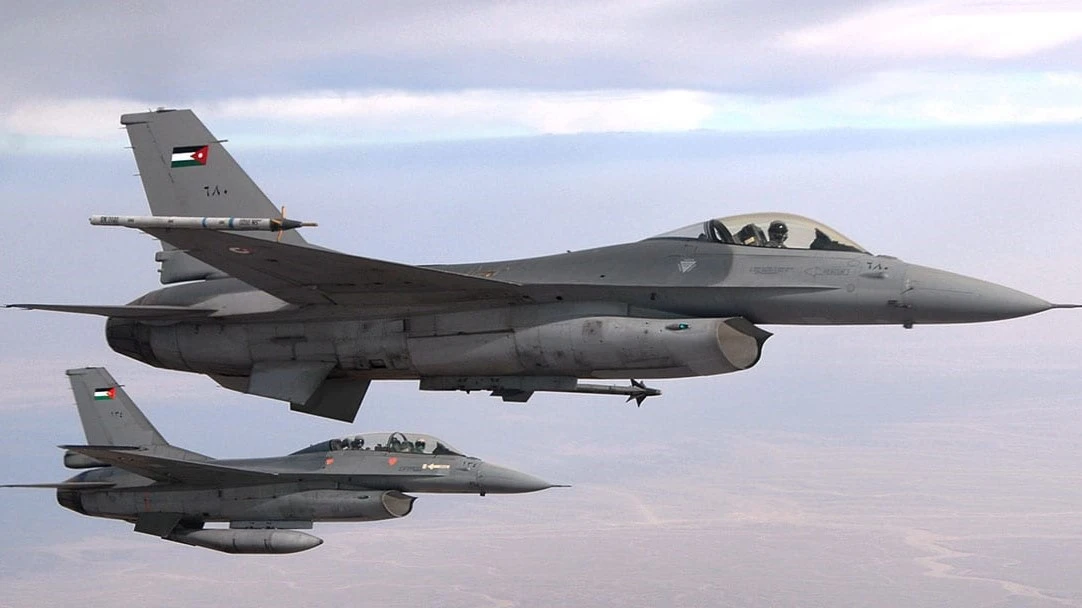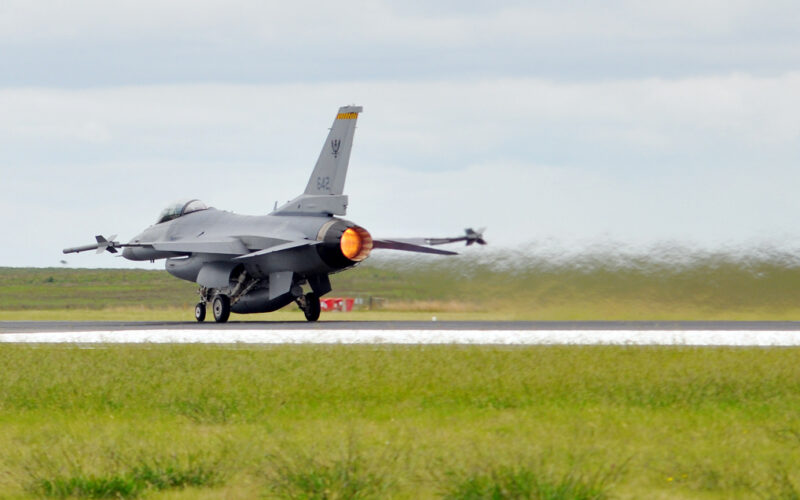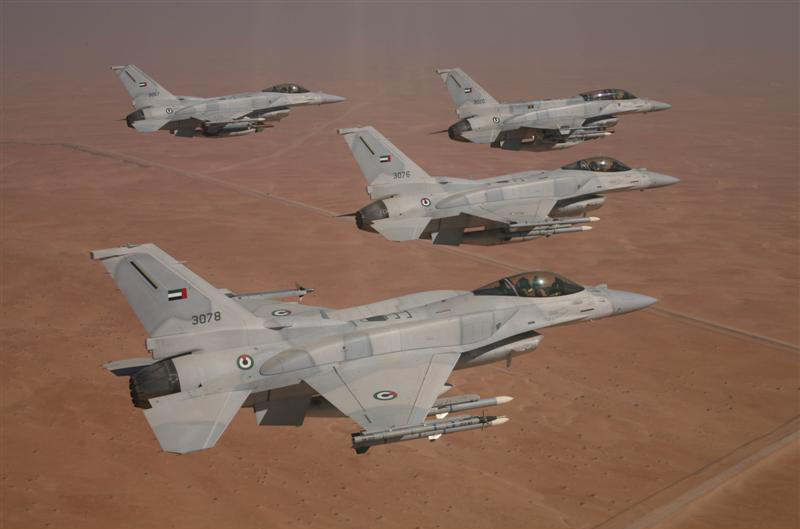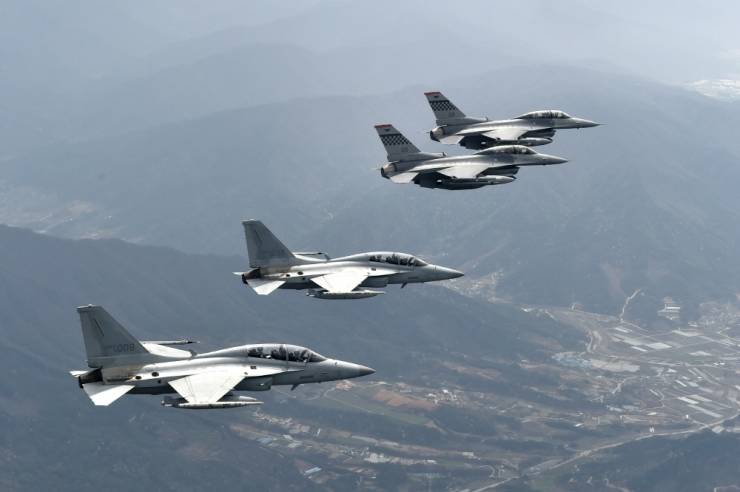Trump Tariffs Threaten to Derail Philippines’ F-16 Block 70/72 Fighter Jet Deal
Philippine Ambassador to the United States, Jose Manuel Romualdez warned that the newly imposed U.S. tariffs have dealt a severe blow to the Philippine economy and could render the country financially incapable of acquiring the advanced fighter aircraft.
(DEFENCE SECURITY ASIA) — The Philippines has signalled that it may be forced to abandon its high-profile plan to acquire F-16 multirole fighter jets from the United States—an estimated US$5.6 billion (RM26.4 billion) procurement—after Washington imposed retaliatory tariffs on the Southeast Asian nation.
Philippine Ambassador to the United States, Jose Manuel Romualdez, revealed that Manila is currently negotiating a trade agreement with Washington while exploring ways to navigate the new economic and diplomatic obstacles that have emerged.
He warned that the newly imposed U.S. tariffs have dealt a severe blow to the Philippine economy and could render the country financially incapable of acquiring the advanced fighter aircraft.
“These F-16s… are very expensive for us… and obviously, we won’t be able to afford them if we don’t have the financial resources to buy them,” Romualdez said.
The Philippines is now facing a 17 percent import tariff imposed by the United States on all of its exports, effective April 9, 2025—a decision rooted in the Trump administration’s revived “Liberation Day” trade policy initiative.
Romualdez cautioned that the proposed fighter jet deal could collapse under the weight of these trade measures, despite the fact that the bilateral trade balance is heavily tilted in America’s favour.
He underscored that the F-16 sale would have delivered a “US$1 billion trade surplus for the United States”—a point Manila sees as further justification for a more equitable arrangement.

Recently, the U.S. State Department approved a possible sale of 20 F-16 fighter jets to the Philippines, in a deal estimated at US$5.58 billion (RM26.4 billion).
The approved package includes 16 of the latest F-16C Block 70/72 aircraft and four two-seat F-16B Block 70/72 variants, marking a significant leap in the Philippine Air Force’s combat capabilities.
The announcement came just days after U.S. Secretary of Defense Pete Hegseth visited Manila, underscoring Washington’s strategic interest in bolstering regional allies amid growing Chinese assertiveness.
The sale notification, submitted to the U.S. Congress by the Defense Security Cooperation Agency (DSCA), is still subject to final negotiations and could see the number of aircraft or the total cost adjusted before the deal is concluded.
Technically, the Congressional notification initiates a 30-day review period during which lawmakers may object to the sale—a move that remains rare in practice.
According to the DSCA’s official statement, “This proposed sale will support U.S. foreign policy and national security objectives by enhancing the security of a key regional partner that continues to be an important force for political stability, peace, and economic progress in Southeast Asia.”

“The sale will improve the Philippine Air Force’s capability to conduct maritime domain awareness and close air support missions, and to execute suppression of enemy air defence (SEAD) and tactical air strike operations.”
“It will also strengthen the Armed Forces of the Philippines’ ability to safeguard its national interests and territorial integrity, while enhancing interoperability with U.S. forces.”
The comprehensive package includes 24 aircraft engines, 22 AESA radars, and an array of internal aircraft systems and avionics.
It also features a broad spectrum of weapons, including 112 AIM-120C-8 air-to-air missiles or equivalents, 36 GBU-39/B Small Diameter Bombs (SDB-1), 40 AIM-9X Block II Sidewinder missiles, 32 AIM-9X Block II Captive Air Training Missiles (CATMs), 60 500-lb MK-82 general-purpose bombs, and 60 2,000-lb MK-84 bombs, alongside associated support equipment.
Additional systems include 12 AN/AAQ-33 Sniper Advanced Targeting Pods, 24 Multifunctional Information Distribution System–Joint Tactical Radio Systems (MIDS-JTRS), AN/ALQ-254 Viper Shield electronic warfare systems or equivalents, infrared search and track (IRST) systems, Air Combat Maneuvering Instrumentation (ACMI) pods, LAU-117 and LAU-88 Maverick launchers, and more.
A U.S. State Department spokesperson clarified that the deal will only be finalized once a Letter of Offer and Acceptance (LOA) is signed by the Philippine government.

Meanwhile, Philippine Department of National Defense spokesperson Arsenio Andolong told AFP that he had “not received any official notice on the decision.”
Romualdez had previously stated that the Philippines intended to request a long-term loan from the United States to help finance the purchase of the 20 new F-16 fighter jets.
“The Department of National Defense will begin negotiations with our American counterparts regarding this matter,” he said.
“We are exploring the possibility of securing a long-term loan from the United States.”
“All of these aircraft offered to the Philippines are brand new. The U.S. has long offered this block to us, and the first units could be delivered as early as next year or by 2027, followed by subsequent deliveries,” he added.
Amid escalating tensions in the South China Sea, the F-16 acquisition is viewed by Manila as a crucial strategic asset that could tip the balance of air power in the region.
With increased incursions by Chinese coast guard vessels and maritime militias within the Philippines’ Exclusive Economic Zone (EEZ), the country urgently requires a modern, high-performance air combat system capable of rapid response and deterrence.
The F-16 Block 70/72—fitted with cutting-edge AN/APG-83 AESA radar, modern electronic warfare suites, and long-range air-to-air missiles like the AIM-120 AMRAAM—represents a quantum leap in the Philippine Air Force’s capability.
For the Philippines, the F-16 would form the backbone of a revitalized national air defence architecture, filling a critical gap left by the retirement of F-5 Freedom Fighters and the limited-range capabilities of the current FA-50 light fighters.

The platform would enable sustained aerial patrols over the Spratly Islands and Scarborough Shoal, where China has militarized key reefs with anti-aircraft systems and runways.
Beyond combat capabilities, the F-16 would serve as a strategic signalling tool—declaring the Philippines as an active, capable actor in the regional power dynamic, not merely a passive observer.
Its high degree of interoperability with U.S., Japanese, and Australian forces makes it a natural fit within broader regional security frameworks such as the U.S.-Philippines Mutual Defense Treaty (MDT).
In an era where China’s military posture in the South China Sea is becoming increasingly aggressive and coercive, the F-16 offers a credible deterrent, enhancing the Philippines’ multi-domain defence response across air, land, and sea.
Ultimately, this acquisition is more than just a hardware purchase—it is a strategic investment in sovereignty, military credibility, and Manila’s place in the evolving balance of power across one of the world’s most contested maritime theatres.
— DEFENCE SECURITY ASIA


